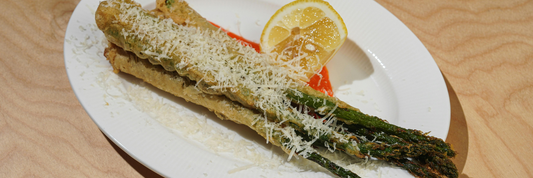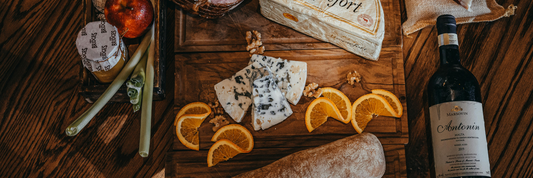Stacking a burger isn't just about piling ingredients it's an art form that can make or break your meal. Whether you're a casual cook or a burger aficionado, knowing how to stack your burger properly can unlock a whole new level of flavor, structure, and visual appeal. Let’s dive in.
- How to Make a Beef Burger at Home-Simple & Juicy
- How to Reheat a Burger Without Losing Flavor - Step-by-Step
- How to Grill Burgers Like a Pro
Why Proper Burger Stacking Matters
Proper burger stacking is essential for three main reasons:
- Flavor balance: Layering ingredients thoughtfully combines sweet, salty, sour, bitter, and umami flavors in harmony, ensuring each bite is delicious and well-rounded.
- Structural integrity: Correct stacking prevents the burger from falling apart mid-bite, maintaining a satisfying eating experience without mess.
- Visual appeal: A well-stacked burger looks appealing and Instagram-worthy, with layers neatly arranged and colors vibrant.
Step-by-Step Burger Layering: Bottom to Top

1. Bottom Bun
Choose a sturdy bun such as brioche, ciabatta, or classic burger buns. Lightly toasting the bottom bun adds structure and helps prevent sogginess by creating a moisture barrier.
2. First Sauce Layer
Apply a layer of sauce like mayo, mustard, or ketchup on the bottom bun. Mayo is especially effective here because its fattiness helps keep the bun dry by preventing juices from soaking in.
3. Leafy Greens
Add leafy greens such as lettuce, arugula, or spinach next. Placing greens under the patty retains their crunch and acts as a shield to stop the patty's juices from making the bun soggy. Whole leaves are preferred over shredded for better structure and to catch condiments effectively.
4. Tomato Slices
Use firm tomato varieties like beefsteak, roma, or heirloom tomatoes. Thin slices are best to prevent the burger from sliding apart, and seasoning tomatoes with salt and pepper enhances flavor.
5. Burger Patty
Select your patty type beef (preferably 80/20 for juiciness), chicken, fish, or plant-based. Cook it to your desired doneness. Place cheese directly on the hot patty to melt it, which helps bind the toppings together.
6. Cheese Layer
Choose from cheddar, Swiss, American, or specialty cheeses. Melting cheese on the patty creates a gooey layer that holds subsequent toppings in place and adds flavor depth.
7. Hot Toppings
Add hot toppings such as crispy bacon, caramelized onions, or sautéed mushrooms. Placing these on the melted cheese helps keep them stable and enhances the burger's savory profile.
8. Cold Toppings
Top with cold ingredients like pickles, raw onions, or jalapeños. These add crunch and contrasting flavors, balancing the richness of the hot elements.
9. Final Sauce Layer
Spread sauce on the inside of the top bun. This ensures the flavor hits first when you take a bite, boosting the overall taste experience.
10. Top Bun
Finish with a lightly toasted top bun, gently pressed to hold all layers together without squashing the burger.
By following this stacking order, you achieve a burger that is flavorful, structurally sound, and visually appealing, enhancing every bite from start to finish.
How to Stack a Burger: The Ultimate Guide for Flavor, Stability, and Presentation
Stacking a burger might seem simple, but mastering the art of layering ingredients can elevate your burger experience to a whole new level. From balancing flavors to ensuring structural integrity and creating a visually stunning presentation, the way you stack your burger matters. In this comprehensive guide, we'll walk you through essential tips on how to stack a burger perfectly, including flavor pairing, presentation tricks, popular variations, and common pitfalls to avoid.
Tips for Flavor Balance
Creating a delicious burger is all about harmonizing flavors. Understanding how different taste profiles interact helps you build a burger that excites your palate with every bite.
- Salty & Umami: These flavors enhance sweetness and balance bitterness. Think of salty bacon or umami-rich cheese paired with sweeter condiments or veggies.
- Sweet: Sweetness balances sour, bitter, and spicy notes. Caramelized onions or a touch of ketchup add that perfect sweet contrast.
- Sour: Sour elements like pickles or a tangy sauce offset spicy, sweet, and bitter flavors, providing brightness and cutting through richness.
- Bitter: Bitter greens such as arugula or radicchio balance salty, umami, and sweet components, adding complexity.
- Spicy: Spicy ingredients are best paired with sweet or creamy elements (like jalapeños with mayo or honey) to mellow heat and add depth.
By thoughtfully combining these flavor profiles, you ensure each bite is balanced and satisfying.
Burger Presentation Tips
A burger that looks good tastes even better. Presentation plays a crucial role in the overall enjoyment and shareability of your creation.
- Color Contrast: Use vibrant greens (lettuce, arugula), reds (tomatoes, ketchup), and yellows (cheese, mustard) to make your burger visually appealing.
- Stack for Symmetry: Layer ingredients evenly and neatly to create a clean, symmetrical cross-section that looks appetizing and holds together well.
- Skewers or Toothpicks: Secure tall or heavily loaded burgers with skewers or toothpicks to maintain structure when serving or photographing.
A well-presented burger invites you to dig in and makes a great impression whether at a party or on social media.
Popular Burger Variations

Different burger styles require slightly different stacking approaches to highlight their unique flavors and textures.
- Classic Burger: Start with a juicy beef patty topped with cheddar cheese, crisp lettuce, fresh tomato, onion slices, pickles, ketchup, and mustard. This traditional combo balances savory, sweet, and tangy flavors perfectly.
- Grilled Chicken Burger: Use a grilled chicken breast layered with Swiss cheese, peppery arugula, and creamy aioli for a lighter yet flavorful option.
- Veggie Burger: Opt for a bean or mushroom-based patty topped with vegan cheese, fresh greens, and hummus. This variation benefits from moisture-rich spreads and crunchy veggies to enhance texture.
Each variation can be customized with sauces and toppings to suit your taste, but the stacking principles remain the same for optimal flavor and stability.
Common Burger Stacking Mistakes
Avoid these pitfalls to ensure your burger is delicious and holds together well:
- Soggy Buns: Skipping toasting or the essential sauce barrier layer leads to buns absorbing moisture and becoming mushy.
- Slippery Stack: Poor layering order or overusing sauces causes ingredients to slide apart, making the burger difficult to eat.
- Unbalanced Flavor: Combining ingredients that don't complement each other results in a confusing or unpleasant taste.
Being mindful of these mistakes helps you both build a burger that's tasty and structurally sound.
Stacking a burger the right way is key to enhancing flavor, maintaining stability, and creating a visually stunning meal. By balancing taste profiles, layering ingredients thoughtfully, and paying attention to presentation, you can craft a burger that's as enjoyable to look at as it is to eat. Don't hesitate to experiment with different ingredients and stacking orders to discover what works best for your palate. Happy stacking!




